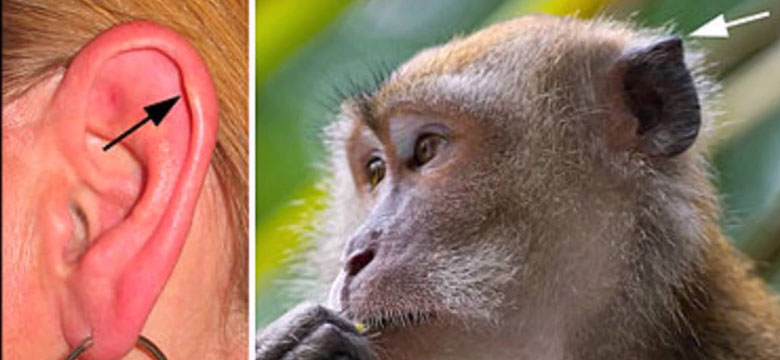Darwin’s Tubercle

The pointy cartilage tubercle formed at the junction of the muscles, which provides free movement in all directions where the sound comes from is called Darwin tubercle, a vestige of the common pointy ear in primates. It may be accompanied by a congenital ear deformity such as prominent ear, or may be observed in a normal ear. In wild life, this pointy structure may be clearly observed in feral cats, such as lynx, which support the ear with 32 muscles.
The pointy Mr. Spock ear (I’m sorry) that we remember from the spacecraft series, is a false image design in this sense, just like the pointy ears that today’s science fiction movie producers/editors fit the aliens in the future (unless our future lives will be in a jungle)
If Darwin’s tubercle aesthetically discomforts, it can be recovered surgically whether or not it accompanies the prominent ear deformity. It is reported to be observed in Swedish (58%).
When muscles work hard, they cause solid and rigid structures such as cartilage and bone to grow. Mandible/jaw-corner bone growth (the resulting in square face), which occurs in untreated people and causes bruxism on Masseter or makes Masseter muscle work too much may be given as an example, or vice versa, the organ that does not activate in the body either becomes blunt or smaller.



